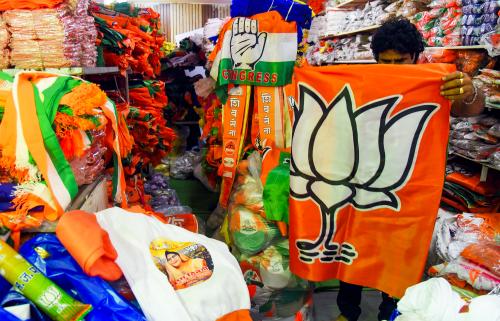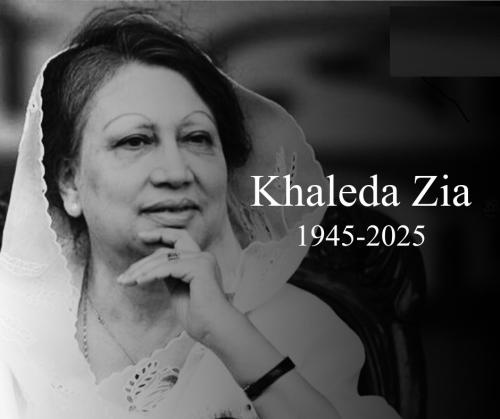BY VISHNU MAKHIJANI New Delhi, Aug 12 (IANS) Lal Bahadur Shastri was "killed twice. First, in Tashkent and then, by us when we deleted him from our minds" by ignoring the circumstances of his death, says a new book on the death of Indias second Prime Minister. Shastri was killed on January 11, 1966, hours after signing a peace agreement with Pakistan in the wake of the 1965 Indo-Pak war, the book says a post-mortem would have cleared the air over his demise, which remains a mystery more than five decades after his passing. "We killed Shastri by being lazy, by being ignorant, by being indifferent. By not finding out the truth. By not asserting our right to truth. We killed Shastri. I have said whatever I had heard, read, learnt, felt and understood. I may be absolutely wrong. It's just an interpretation. But, if you think that in a democracy, a citizen's first fundamental right is the right to truth then, now, you find out what is the truth," writes award-winning filmmaker, bestselling author and free thinker Vivek Ranjan Agnihotri in "Who Killed Shastri?" (Bloomsbury). "That will be real justice, real patriotism, real nationalism and real shradhanjali", to Shastri, Agnihotri writes, adding that of all the theories around his death, the "least popular" is the truth. "There is one question which is at the centre of all the theories - the post-mortem." Why was the post-mortem not conducted, Aghihotri asks, pointing to Indian Ambassador T.N. Kaul's waiving the requirement after Shastri's personal physician Dr R.N. Chugh certified the death as being caused by a heart attack. This was strange because immediately after Shastri's death, the Ninth Directorate of KGB arrested Ahmed Sattarov, his Russian butler and Jan Mohammad, the cook at Kaul's residence who had prepared the Prime Minister's dinner that night. "On what charge? On the suspicion of poisoning Shastri. Wasn't this suspicion enough for reasonable doubt? Is it possible that an Indian cook, not an ordinary cook but Indian ambassador's cook, was arrested on the suspicion of poisoning the Indian prime minister and nobody in the government knew about it? Is it even possible," Agnihotri, who has also made a film titled "The Tashkent Files" on the events of the time, writes. He also writes that the late Kuldip Nayar, who had broken the news of Shastri's death in a telephone call to the UNI news agency, "had (in a recorded video interview) confirmed that Ambassador T.N. Kaul persisted with him to issue a statement clarifying Kaul's name. Isn't that reasonable doubt?" As for Shastri's body turning blue by the time it arrived in New Delhi, the government stated that doctors had said this was a a natural phenomenon in the case of a heart attack. "What the government didn't tell us is that they had also said that without a post-mortem and taxological studies, it is impossible to absolutely say that no poison was administered," the book states. "Then, there is Shastri's cap, stained with blood, confirming that blood was seeping from his neck. Isn't that reasonable doubt? I ask you to close your eyes for a moment and put your hand on your chest and visualise if some old member of your family has gone abroad and he dies under mysterious circumstances. "When the body comes back, it has turned blue and blood is seeping from cut marks on the body. But, you are not allowed to even do a post-mortem. Fifty years go by � how would you feel," Aghihotri asks � and poses five questions: Was it really a heart attack that killed Shastri? Was he poisoned? Was it a state-sponsored murder? Did the CIA kill him? Was it the KGB? "Isn't it true that the KGB was notoriously famous for assassinations, especially with poison? Isn't it true that their trademark technique was that they used to take out the organs from the body, leaving no traces behind? Can that be the reason why there were cuts on Shastri's body," the author asks. "If all this knowledge was with the government agencies, why it was not revealed to the Parliament? Why was it hidden from the citizens? Who was behind it? Given the evidence, interviews and confessions, would it be wrong to say that after Shastri's death, India was colonised again? This time with systematic subversion. This was done by using our own constitution. By using our politicians. Our intelligence agencies. By using our media, bureaucracy and intellectuals. By using our system," the book states. Aghihotri also wonders why the words "socialist and secular were inserted in the preamble to the Constitution by the 42nd Amendment during the Emergency, particularly when B.R. Ambedkar had stoutly opposed this when the statute was framed. "Who was going to benefit the most from this compromise? Who wanted to entangle India in the ideology of socialism? The clues of murder are not in what happens before the murder. They are hidden in what happens after. Within a few years of Shastri's death, India was engulfed with red-tapism, rationing, nationalisation, corruption? Would it have been possible if Shastri was alive," the author wonders, terming the Amendment the "murder of democracy" that put India on "sale". "If Shastri was alive, would anyone have dared to put India for sale? Is this why no post-mortem was done? Who are these people who wrote on India's forehead that India is for sale? When the youth protests, they are told they know nothing. Yes, they don't know that after Shastri's death, India had become a Disneyland for spies. KGB had maximum spies in India. Our own intelligence officers were working on KGB's payroll," the book says. The day after Shastri's death, his secretary found a note in Shastri's handwriting. It was an Urdu couplet of Saqib Lakhnavi: "Zamana bade shauq se sun raha tha, hum hi so gaye dastaan kehte kehte (The world wass listening with great interest, we only fell asleep while narrating our story)." "Maybe, Shastri wrote this seeing us. Everything is apparent but we are sleeping. When the future generations will ask who killed Shastri, all fingers will point to us," Agnihotri writes. The book provides enough ammunition to ponder over. Read it and judge for yourself. (Vishnu Makhijani can be reached at vishnu.makhijani@ians.in)
'Post-mortem would have ended speculation on Lal Bahadur Shastri's death (Book Review)
- by Rinku
- August 12, 2020 2 minutes

Vivek Agnihotri.










